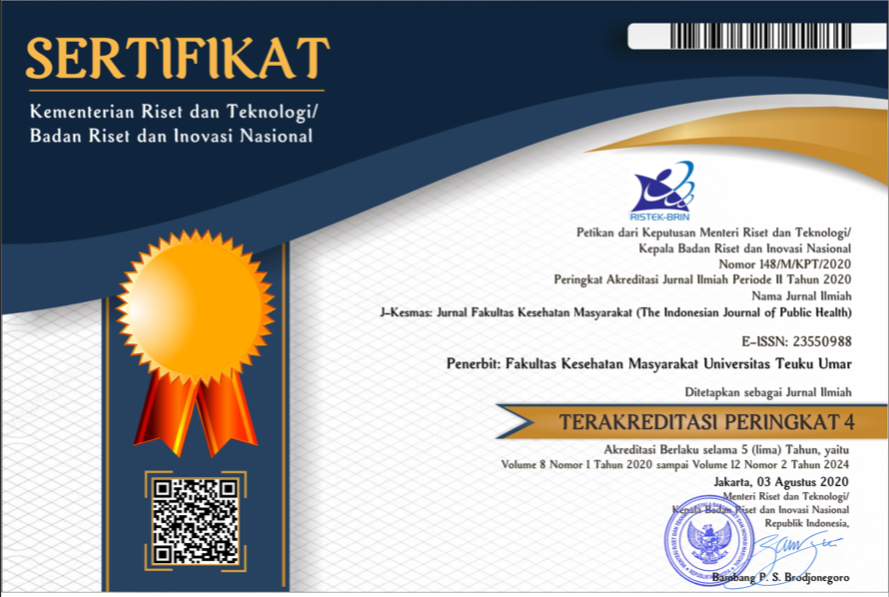The Influence of Maternal Age, Parity and Education on Infant Mortality in West Aceh Regency
Abstract
Keywords
Full Text:
PDFReferences
BKKBN, BPS and Ministry of Health, Indonesia Demographic and Health Survey [Survei Demografi dan Kesehatan Indonesia], 2013.
Health Office of Aceh Province, Health Profile of Aceh Province in 2014 [Profil Kesehatan Provinsi Aceh Tahun 2014], Banda Aceh, 2014.
Health Office of West Aceh Regency, Health Profile of West Aceh Regency in 2014 [Profil Kesehatan Kabupaten Aceh Barat Tahun 2014], Meulaboh, 2014.
Ministry of Health of the Republic of Indonesia, Health Profile of Indonesia [Profil Kesehatan Indonesia], Jakarta, 2011.
Nursania, Determinants of Infant Mortality in Indonesia [Determinan Kematian Bayi di Indonesia], Master’s Thesis, Universitas Indonesia: Jakarta, 2012.
WHO, Unicef, the World bank, United Nation., Level and Trends in Child Mortality, 2012,
Wright, K. Mathieson, L. Brearley, S. Jacobs, L. Holly, R. Wickremasinghe, Ending Newborn Deaths Ensuring Every Baby Survives, Save the Children 1 St John’s Lane London EC1M 4AR UK.
G. R. Sharifzadeh, K. Namakin and H. Mehrjoofard “An epidemiological study on infant mortality and factors affecting it in rural areas of Birjand, Iran”, 2008, Iran J Pediatr, Vol. 18, No. 4.
DOI: https://doi.org/10.35308/j-kesmas.v6i2.1188
Refbacks
- There are currently no refbacks.
Managed by Fakultas Kesehatan Masyarakat
Published by Universitas Teuku Umar
Website: http://jurnal.utu.ac.id/jkesmas
Email: jkemas@utu.ac.id 
This work is licensed under a Creative Commons Attribution-ShareAlike 4.0 International License.







.jpg)


